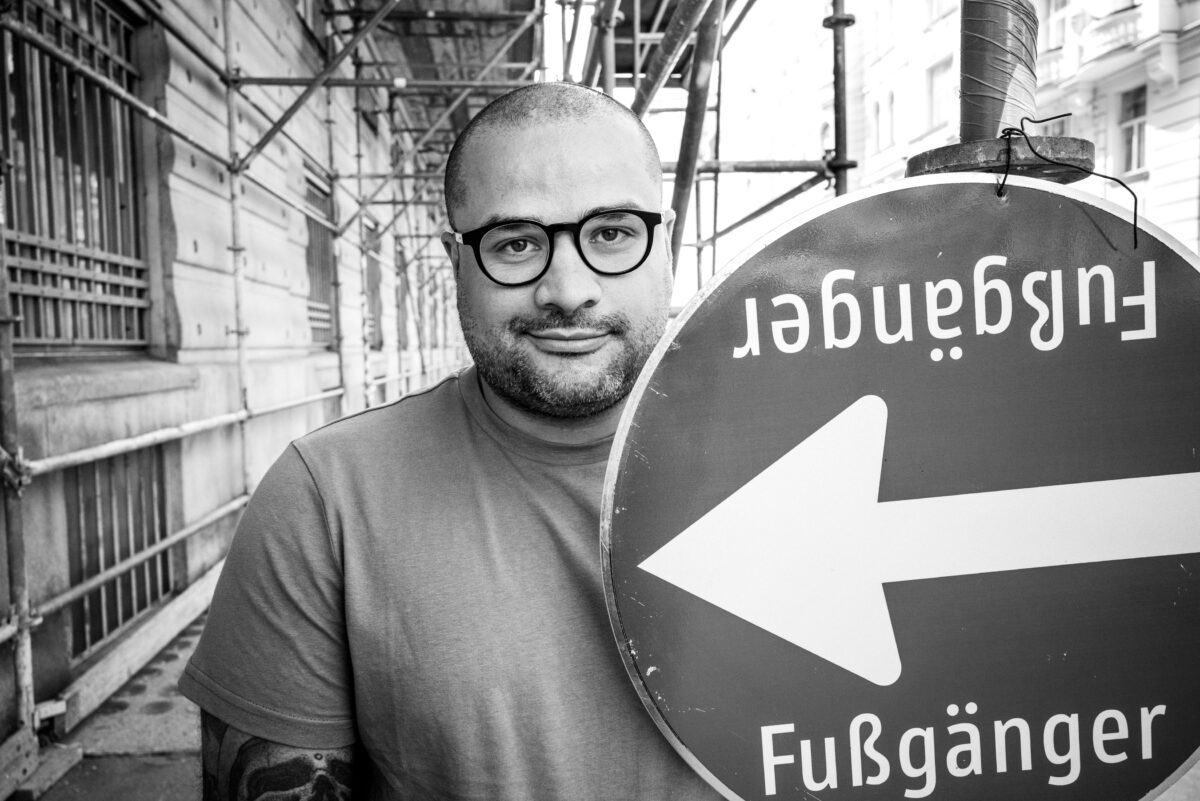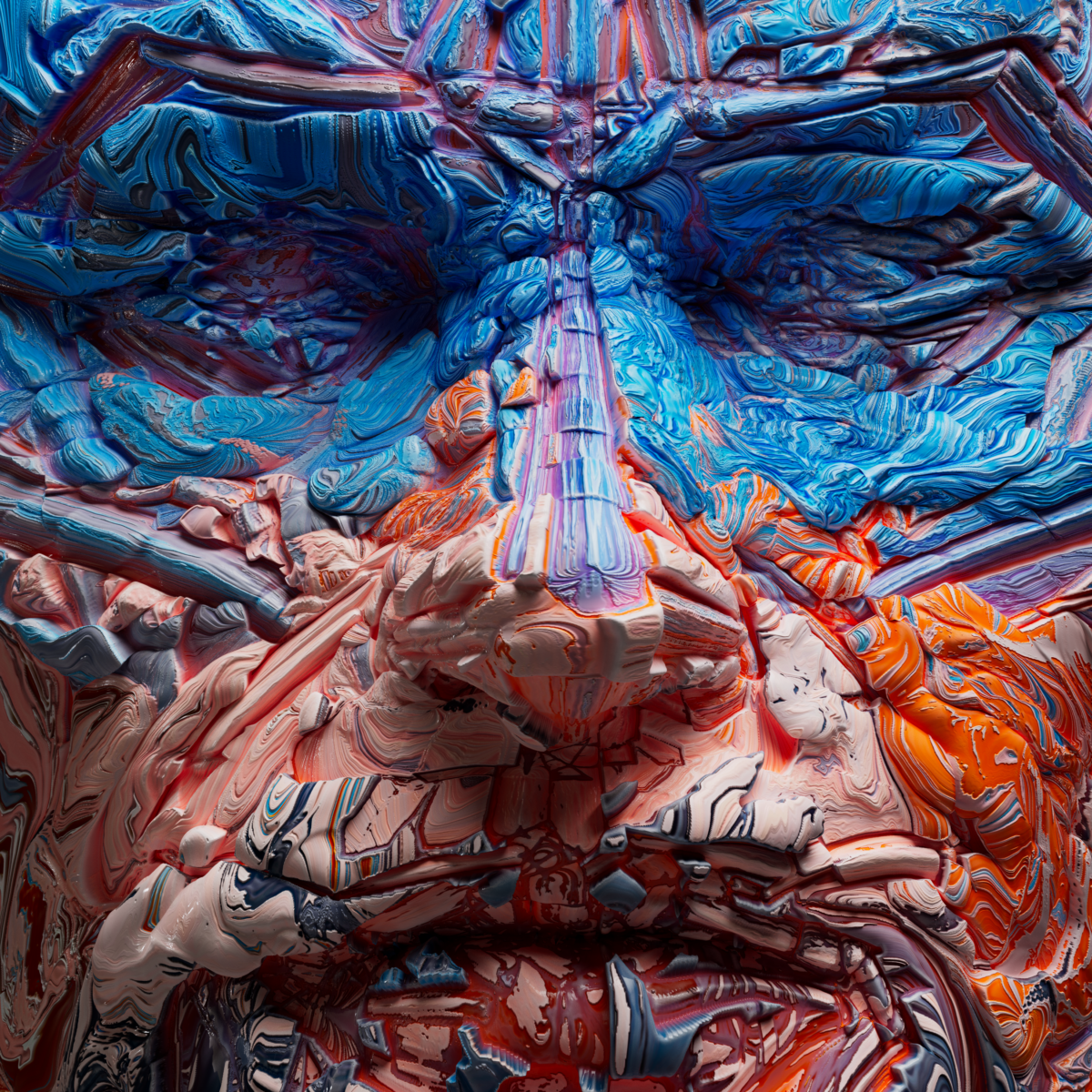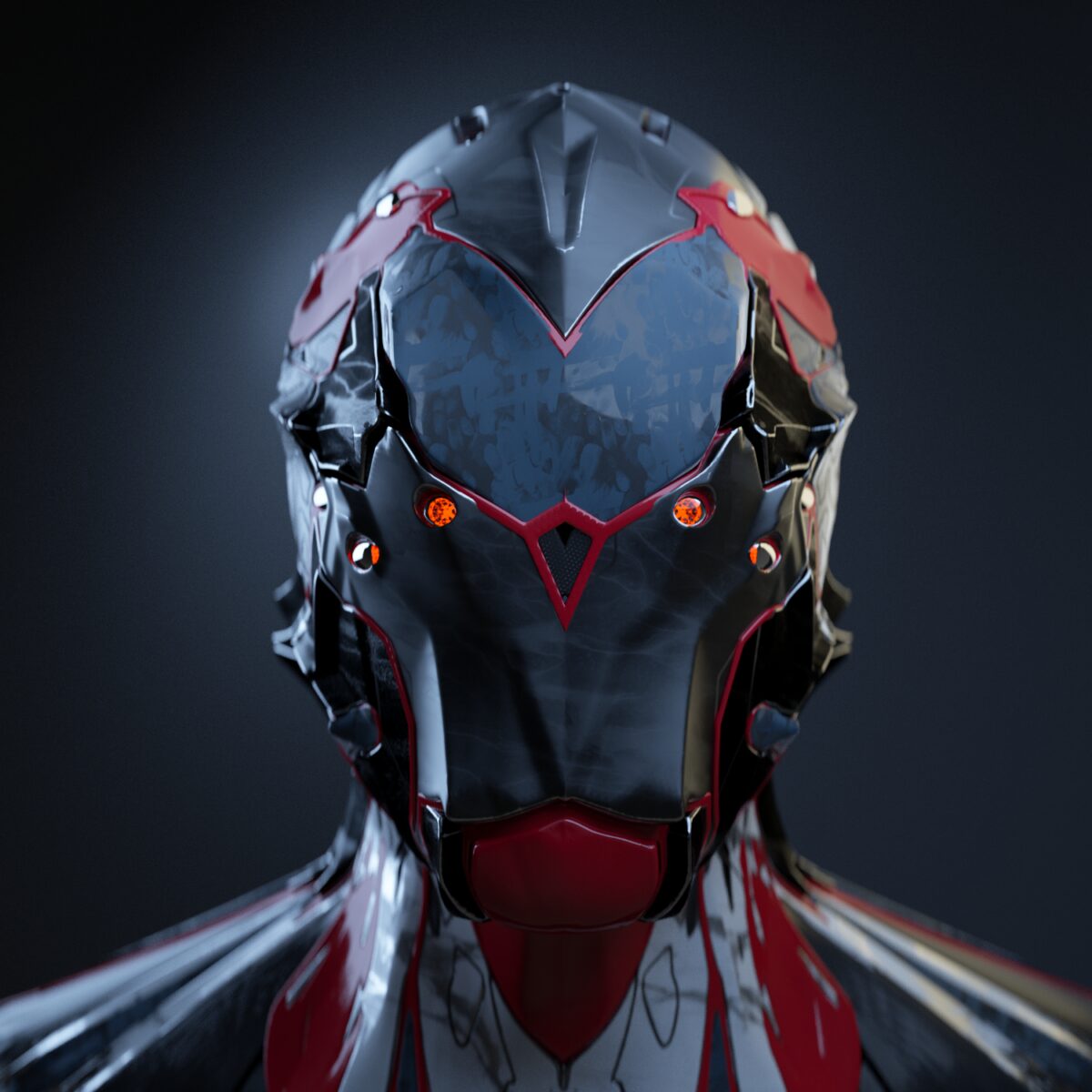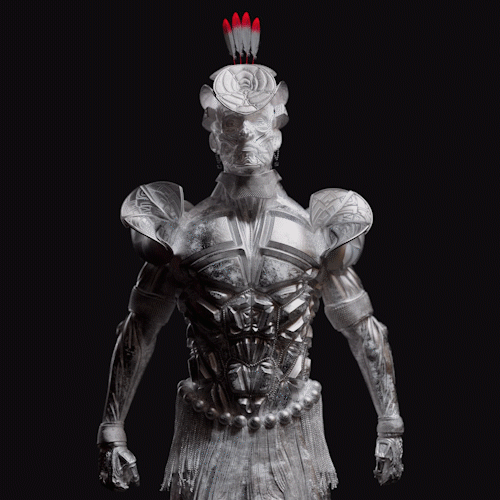Can machines have feelings? Fernando Magalhães aka MGXS is a generative artist who has crafted a universe of his own design in search of that very question. The inhabitants of his world are robots with distinctive characteristics that juxtapose an abstract and painterly style with digital renderings. The robots are enlivened with palpable energy due in part to the artist’s method of leaving the design file open so that he may return to it at a later point and change a specific characteristic to transform the entire composition. Thus MGXS creates infinite versions of his complex robots as his universe and the metaverse evolve.

Photograph © Rainer Hosch
The blockchain challenges traditional roles that we have grown accustomed to in the traditional art world. The artist is not only the creator but a marketer promoting each drop, their personality and presence within the crypto art community build a loyal following and subsequent collector base. What do you see as the future role of the curator?
Yeah, that’s a good point when you talk about the artist having to wear different hats because right now everything is so open which creates a lot of diversity of ideas. The amount of information is not the problem anymore, it’s how you find it. How do you know if something is completely legitimate? What’s worth taking a look at? So this is completely a new challenge. I can feel that there will be artists that will take the route of curating and selecting good artworks that have something to bring [to the table in regards to] innovation and aesthetics.
As more marketplaces emerge and new artists mint their work, what characteristics do you find most intriguing when discovering artists to follow?
With NFT’s right now, I stick to the ones that I like and just follow the artists that I relate to [in regards to] their aesthetic and the concepts that they bring to the table. If I start to look to everything that’s happening, it’s just impossible [to maintain a curatorial focus]. Right now NFTs and crypto worlds exist in a super small community and soon much more people will join and it will be harder to really understand the space.
It sounds like your thoughts in regards to curation comes down to a style and ethos that resonates with you. Once you determine what you like, you can filter through Instagram, Twitter, and Discord to continue on your path of discovery.
Yes.
The panel discussion that took place during Vienna Contemporary was held in a nearby building from where the physical artworks were installed. While NFT’s are becoming more integrated into the programming art fairs, there is still a question of they can co-exist and complement each other. Do you feel that the future of art fairs will strike a balance between the physical and its digital counterpart? Or do you think that the two entities should remain separate?
I’m going to be really honest, I don’t think there is a right or wrong. I think there will be people that keep work [in the physical space] and want to keep things as is, and there will be people that go totally digital. I think that NFT’s in particular are kind of in the “cave age,” you know? We are still repeating the same patterns that we can relate to from the traditional world, but the digital world has different capabilities and so the limits are different. I think there’s an endless amount of possibilities of how things can evolve and change. I think if we try to compete then we’re losing the real possibility. The digital will never beat the real world and the real world will never beat the digital… there are two parallel ways.
With online viewing rooms there was an attempt to copy and paste the white cube model. Instead of repeating the same model, we need to embrace the digital space and treat it as its own entity, one that doesn’t rely on the physical. Just as we are still in the infancy of the NFT space so we haven’t even all that is possible, your process is also about pushing the boundaries of what we think is possible. Your process of generating “machines and feelings,” implements a set of parameters that allow the piece to evolve. Within the world you have created, the portraits are assigned a distinctive set of characteristics such as color, texture, and weight. What I find intriguing is that a work is never “finished,” rather you leave the file open so to speak so that you can make adjustments and the as a generative work of art it’s always in a state of change. How do you achieve the sense of “machines with feelings” when working with these parameters?
I define these spaces in each system. I have a system, like a methodology of colors. I just apply random colors throughout all the parts and from there I make rules to split [it up] so there is a [balanced] ratio of [saturation and tone]. In defining the space where rules can happen I really try to shape these parameters and press “run” and I see all the variations that the system shows me and once I do that I see there is consistency. How can I influence the tools that I made in order to have beautiful things? What is the formula of beauty for me? So it’s really complex with super simple rules. I like to work this way because sometimes the variations [that appear] are better than what I had [originally] decided. The first time I realized that I thought, “whoa, that’s amazing! I want to see more of this!” There’s a limit to my imagination, but in the system, so many things can happen. You can control the things you want most. But actually, you have no control. Sometimes if you have too much control, [the pieces] are not good and for me, it’s kind of this battle as well.

“Mixed Feelings – Determination
The Gods Mixed Feelings -Determination :gnss:”
Artwork Courtesy of the Artist
It sounds like you’re establishing parameters for each character you create. But you are leaving room for a chance so that after you “render” the image, you can make one small change and it will greatly influence the feel of the piece. Are you implementing machine learning in your method?
No… There are a few pieces that I use AI, but the robots and portraits are created with algorithms.
It’s rather ironic that algorithms are often what helps us discover new artists and that is also part of your methodology.
The way of working allows me to create a large amount of artwork. If you tweak the gravity, how will it affect the system? How does it affect that creation? And this is what I’m doing, tweaking all these all these parameters trying to understand how to it affects [the artwork]. When I say “machines and feelings” it’s because what’s guiding me is my gut feeling. I don’t know where I’m going to land because it’s totally open. I just want to go in this direction and I end up going in a totally different direction which is super cool because I’m the spectator AND the artist. It’s really addictive to play with this.

“Maverick #13”
Artwork Courtesy of the Artist

Artwork Courtesy of the Artist
URUCU Neon Blood Warriors Series. The whole evolution of a URUCU warrior, changing over time while the neon blood flows through his veins. The paint seal protects his soul at the same time it unlocks the full power. A combination of Japanese Samurai and Indigenous Groups at the roots of Brazil, playing with their differences and similarities.
Your work is always in a state of evolution. Your robots are born from a narrative that Planet Earth no longer exists and because the colonization of planets has failed and we are entering the birth of something new. How do you refer to your portraits?
I call them robots because for me robots are humans made of synthetic parts. When I first started with this motif, I was definitely developing them and giving them names and identities, and trying to populate the world. In my personal life, I felt every field was shifting. For me, the world started dissolving. This is how I really right now, that everything is dissolving. Everything is liquid. I’m not relying too much on a specific narrative and talking more about the dissolving of reality because that’s exactly how I’ve been feeling the last two, three years- that I’m losing. It’s just that reality for me was always this wall where everything was hanging. And now we’re looking at the side sand there’s no wall and there’s nothing hanging- and right now we’re looking at the sides and there’s no wall and there’s nothing hanging and there and everything is gone. So now it’s all this mess of things on places that I thought were solid but they are shifting and changing so I’m exploring more of this liquid world.
So you are establishing fluidity in an alternate space. As you mentioned earlier you feel that we are in the early days of the NFT- a new wave of collecting, a new way of creating. What are your hopes for the future?
I would love to see people really exploring the possibilities – not trying to create new ways of art that are just referencing the old establishment. I think we’re going to lose a lot of potentials if we do the same thing again. I think it’s a bit sad if we take this new medium and these new possibilities and just try to push forward in a sense. I don’t think JPGs are the final form, but we need this transition. I was telling a friend of mine that this feels the same as 1995 when the Internet started, for me at least with all these weird websites. At the time it was super fun, but when you see it now it was super ugly with crazy aesthetics but they were trying to come up with different things. I will do my part… if I can I can do anything that is new or at least try something that is different from what is established.
Why work within limitations if we haven’t even discovered all that has yet to be explored?
Artists, at least the ones I know have never had the amount of money to try things that [challenge] the white cube. Now there are endless possibilities inside the screen. Inside the screen, we draw whatever we want! Using the computer as the paper will change the picture. There are many opportunities, we just need to be more creative and really try to do something different. Like I said if we try to compete with the real world we are never going to make it. Because the real world is always going to beat the digital if we continue doing the same thing… go nuts! Because we can find many cool things on the way.
Featured Image: Fernando Magalhães in Vienna © Rainer Hosch for Installation Magazine, 2021
